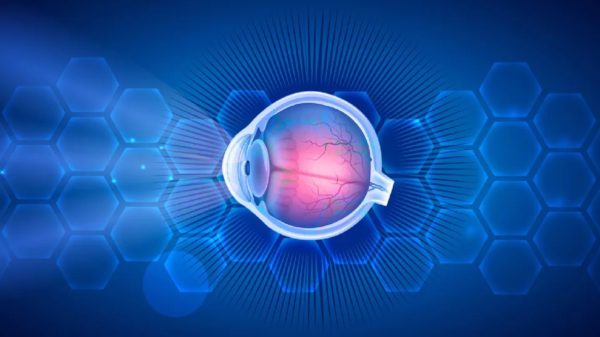How to biopsy the unbiopsy-able: Retinoblastoma research study to go international.
by Melinda A. Smith, PhD
Just a handful of years ago, retinoblastoma had the medical field stumped. This aggressive eye cancer affects babies and young children and can lead to loss of vision. Unfortunately, the only way to diagnose the disease is through a doctor’s exam. Unlike with most cancers, oncologists can’t directly sample or biopsy the cancer.
Enter Jesse Berry, MD, Associate Professor of Ophthalmology and Dermatology (Clinical Scholar) at the USC Roski Eye Institute, and the Director of Ocular Oncology and the Retinoblastoma Program at Children’s Hospital Los Angeles. Dr. Berry was a full-time clinician who turned to research in hopes of finding a better way to diagnose this pediatric cancer. She decided to examine the aqueous humor, which is the fluid inside the eye. What began as a question—can we arrive at a diagnosis using the aqueous humor?—grew into a full research program.
It turns out that these liquid biopsies contain more than a yes or no diagnosis of retinoblastoma.
“We use a tiny amount of fluid,” says Dr. Berry. “It’s only 100 microliters, about half the size of a pea. But we get a trove of information, things that were impossible to see before. We can see genetic mutations, chromosomal abnormalities. We can diagnose retinoblastoma at a molecular level.” This arms oncologists with a very specific map of each child’s disease.
The results have been so promising that Dr. Berry is taking her research to the next level. She has received funding from the National Cancer Institute of the National Institutes of Health (NIH) to oversee an international study on liquid biopsies for retinoblastoma. “Our studies have shown that some markers in the aqueous humor might mean a more severe disease,” she says. “Now we have a chance to really study this in a much, much larger patient population.”
Set to begin this summer, the study involves 18 sites internationally, including the largest retinoblastoma center in Canada. All study samples will be sent to and processed by Dr. Berry’s team and the Center for Personalized Medicine. The study is the first of its kind.
Children will be followed for a minimum of two years, so researchers can examine samples for possible cancer recurrence. Because tumors return in approximately 50% of retinoblastoma patients, this information can be lifesaving.
“We know that detecting a cancer as early as possible gives a child the best chance,” says Dr. Berry. “In continuing to take biopsies from these children, we can treat any recurrences early on, even before they’re visible to a clinician upon examination.”
Innovation in Under a Decade
To put into perspective how quickly and exponentially this research has grown, one need only to look at Dr. Berry’s NIH awards. A mere five years ago, she proposed to study the aqueous humor for liquid biopsy. Now, as her five-year grant comes to a close, much has changed, thanks to Dr. Berry’s determination and the work of CHLA’s Center for Personalized Medicine. “We now have a test in-house, where we can sample a patient’s aqueous humor, and within days we know whether or not the child has retinoblastoma, and the exact mutations and molecular profile of their cancer.”
What’s next?
The results of Dr. Berry’s forthcoming study will help shape the next phase of her research. “Right now, we’re in this position where we see very strong data,” she says, “and we need to ensure that what we’re seeing is also represented in the international population.” Then, says Dr. Berry, the team has plans to develop a clinical trial to evolve the standard of care for diagnosing and treating retinoblastoma—and link specific treatments to the information identified in the liquid biopsy.
*
This story originally appeared on the website of Children’s Hospital Los Angeles and has been reprinted with their permission.

